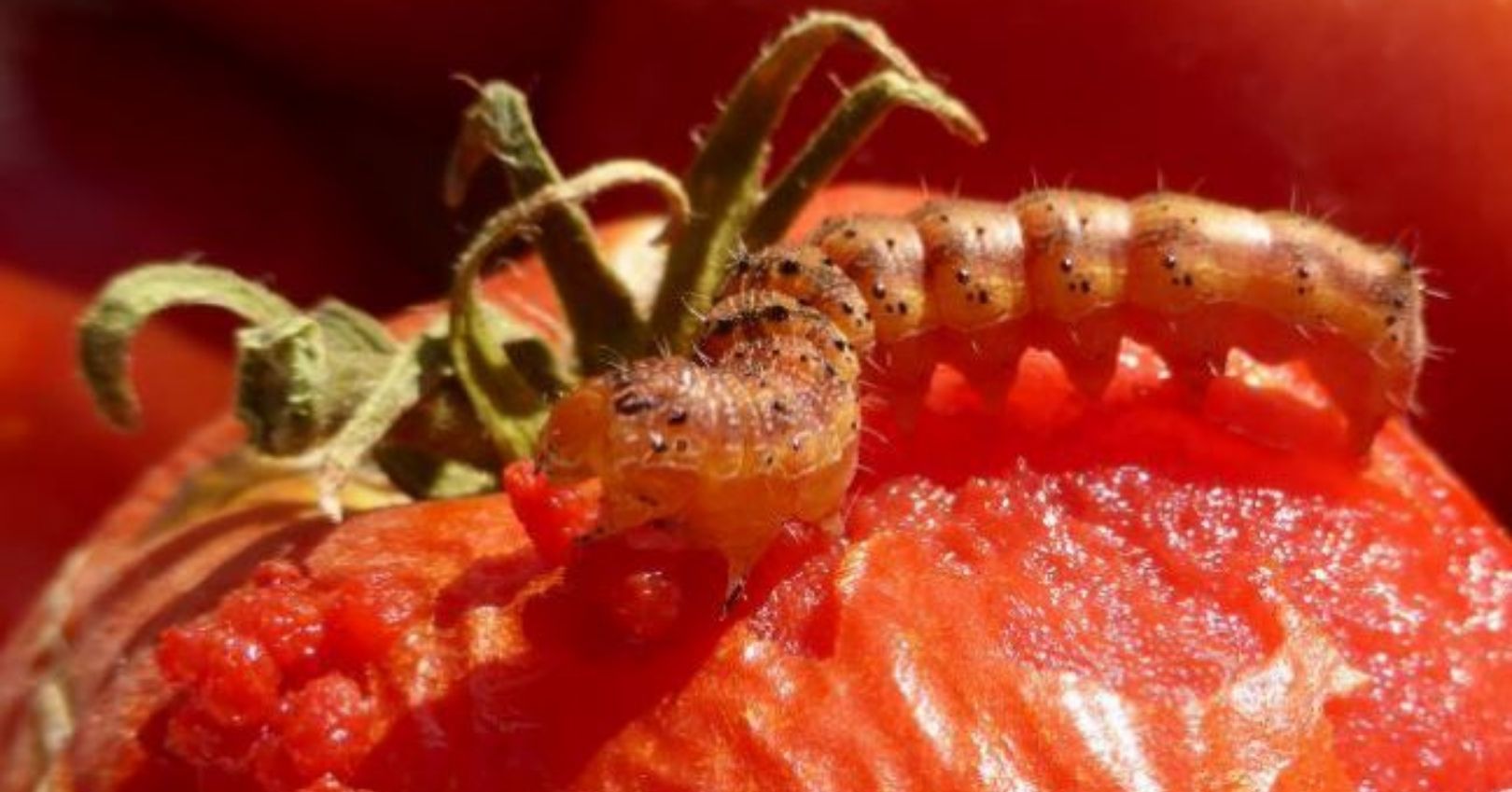Tomato Fruitworm


Description
Adult: Tannish-brown moth with a 1.5 inch (38.1 mm) wingspan. The front wings are marked with a distinct dark spot in the center and darker bands near the outer margins. The hind wings are lighter tan, with a dark band along the outer margins (Fig. 10.18). The male moths have green eyes.
Egg: Very small, one-half the size of a pinhead, creamy white and dome-shaped with ridges, darkening in color as they near hatching.
Larva: Caterpillars are brown-headed with green, brown, or black bodies. Alternating dark and light stripes run lengthwise on the body. Larva length ranges from 0.1 inch (1.5 mm) up to 1.5 inches (38.1 mm) when fully grown.
Pupa: Cylindrical, brown, about 1 inch (25 mm) long.
Damage
Tomato fruitworm (TFW) causes damage when larvae feed on leaves and reproductive structures of tomato, pepper, and eggplant. Larvae have chewing mouthparts which they use to remove plant tissue resulting in distorted leaves. When fruit is present, the tomato fruitworm will often attack fruit without any leaf feeding. TFW bore deeply into the fruit to feed and complete larval development resulting in watery internal cavities filled with cast skins and frass (feces). Damaged fruit ripens prematurely and becomes unmarketable when larvae are present or when fruits rot due to secondary invasion of diseases. Unlike corn, where one larva is found per ear, a single larva can enter several fruits during feeding and development.
Management
Cultural
- Monitor with traps. Place pheromone traps on perimeters of fields. Traps can be used to indicate relative adult densities and/or peak activity.
- Search leaves and fruit for eggs and larvae. Begin sampling when moths are present in traps. Search leaves above and below the highest flower cluster for eggs. When fruit is present, check for damage and presence of larvae. Check several plants in 4-5 locations.
- Look for signs of parasitism or predators. Parasites and other natural enemies often destroy significant numbers of eggs, but are sensitive to insecticide sprays.
- Avoid planting tomato, pepper, and eggplant near post-silking corn fields. When corn silks turn brown, TFW moths will seek out other nearby hosts for egglaying.
- Remove and destroy cull fruits and plant debris. Disk or plow plant debris, including weeds, to eliminate overwintering host sites and to destroy infested fruits and pupating larvae
Chemical
Use monitoring techniques to help determine when chemical control is needed. Although larvae may remain partially unprotected in the fruit and be exposed to insecticides when moving from fruit to fruit it is best to target treatment towards eggs and newly hatched larvae before they enter the fruit in large numbers.
Biological
Natural enemies include parasitic wasps (Trichogramma spp.) which parasitize TFW eggs, and generalist predators such as lacewings (Chrysopa spp. and Chrysoperla spp.), big-eyed bugs (Geocoris spp.), damsel bugs (Nabis spp.), and minute pirate bugs (Orius spp.) which attack TFW eggs and young larvae. Trichogramma pretiosum is available from commercial insectaries.

